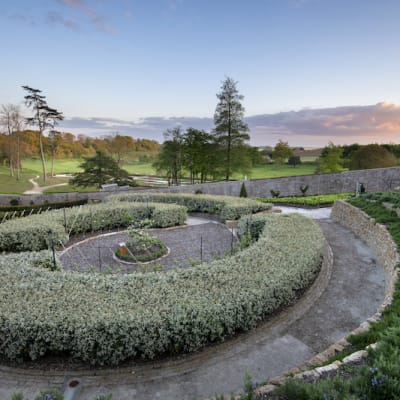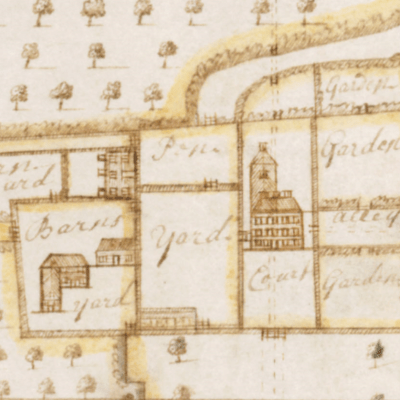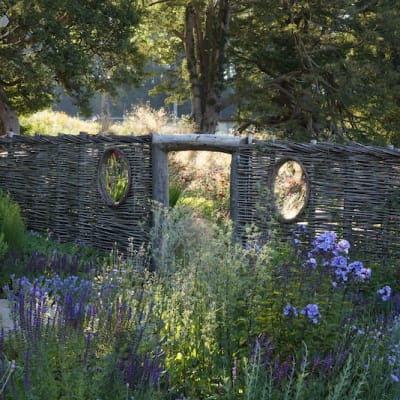
To the Western mind, the Japanese garden may seem a paradox. It displays reverence for nature, rooted in the ancient belief system of Shintō, yet is manipulated by hand to a refinement unknown in gardens elsewhere. Shaped by influences from China, including Buddhism, it evolved over centuries. Leadership came first from aristocrats, then generals. Despite different styles, all celebrate the diverse beauty of natural forms. This is achieved through elaborate artifice – a manipulation of scale, the painstaking shaping of plants and careful placement of symbolic allusions.
In planning for years and development for more than six months, our own Bonsai Garden - overseen by Heritage Manager and gardener, Maiko Ishida - is now open. Modelled on 15th and 16th century Japanese gardens, built on a hillside, it features a selection of Bonsai - one of which is 100 years old - Niwaki trained trees, and areas of inspiration such as a Tsukubai entrance and Karesansui (Dry Rock Garden), which we share more about here.

“Cleanse your mind at the Tea Garden inspired entrance, then sit and enjoy the space. There’s intentional emptiness here, giving you room to appreciate each carefully pruned element - and to just ‘be’.” Maiko Ishida, Gardener and Heritage Manager
Tsukubai
This traditionally guards the entrance to a Japanese tea house or Buddhist temple. Before entering, visitors purify themselves by ritually washing the hands and rinsing the mouth. Visitors crouch on the kneeling stone in front of the stone basin (chōzubachi). Then scoop up water to cleanse themselves.
Concealed below the sea of pebbles lies a suikinkutsu (literally ‘water piano cave’). This is an upturned clay jar, buried and partially filled with water. When splashes from hand washing above trickle into the jar through a hole in its top, it creates a faint ringing sound, quite melodic. This soothes and relaxes the visitor in readiness for the tea ceremony.
Karesansui (Dry Rock Garden)
This tradition matured in the 14th century. The most famous: Ryōan-ji temple in Kyoto. Here, white sand or raked gravel suggest waves on a sea, among which rise carefully arranged rocks, moss and very few plants. The garden offers a backdrop for seated meditation. And ceremonies of maintenance – the slow, repetitive raking of gravel, the patient weeding of moss – become a devotional exercise. Karesansui embodies the beauty of absence. Try entering it using only your mind.
Roji (Tea Garden)
Translating as ‘dewy path’, the Roji garden entices one from everyday bustle into the serenity of the tea house. Here shrubs and trees suggest walking through a forest. Stepping-stones, gateways and changes of direction slow your pace and concentrate the mind. Stone basins allow guests to wash their hands and rinse their mouths, before passing through a gate into an inner sanctum where the tea ceremony (chanoyu) is performed.
Shin (真), Gyo (行) and So (草)
This idea originated in calligraphy fonts. Shin is formal, gyo is semi-structured, and so casual. Or shin is elaborate, gyo intermediate and so simple. Using a metaphor of clothing: shin will be evening dress, gyo office wear and so jeans & T-shirt. The principle of shin gyo so is used in many traditional Japanese arts, such as the tea ceremony, ikebana flower arrangement and painting arts. In garden design, differences are played up in pavements, in hedgings, in stone structures. Example: a shin pavement may sport an edge on both sides, while a gyo version will have it on one side only, and a so interpretation will play with non-rectangular shapes and irregular sizes.
Japanese Garden Society Lectures
Interested to know more about Japanese garden design and influences?
The Japanese Garden Society is holding a series of online lectures over the coming weeks, in association with The Gardens Trust - from therapeutic landscapes to the Tokachi Millennium Forest.
Click the link below to book and join in online.
https://www.eventbrite.co.uk/e/japanese-gardens-key-elements-of-japanese-gardens-tickets-173708245037



